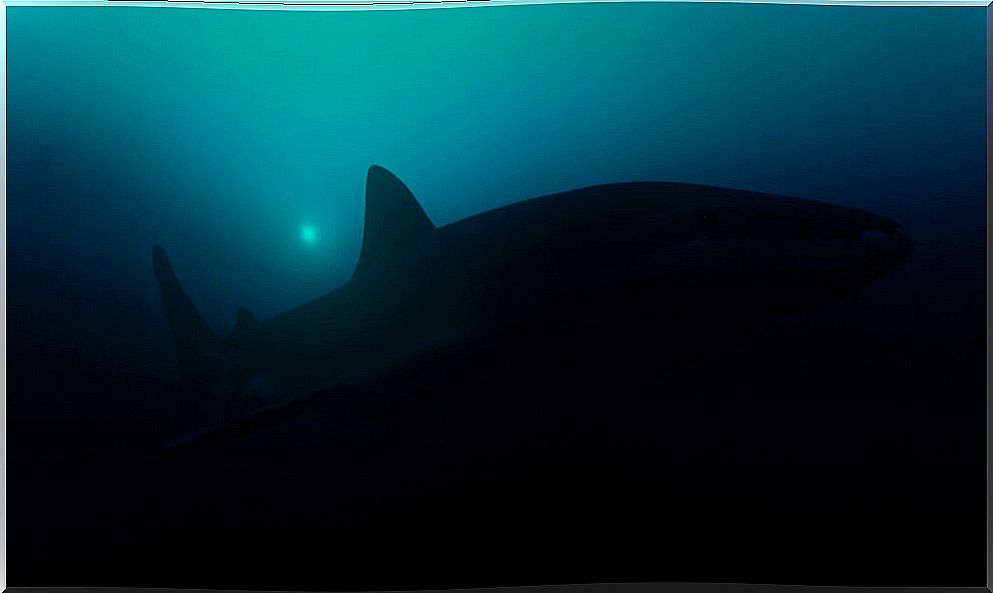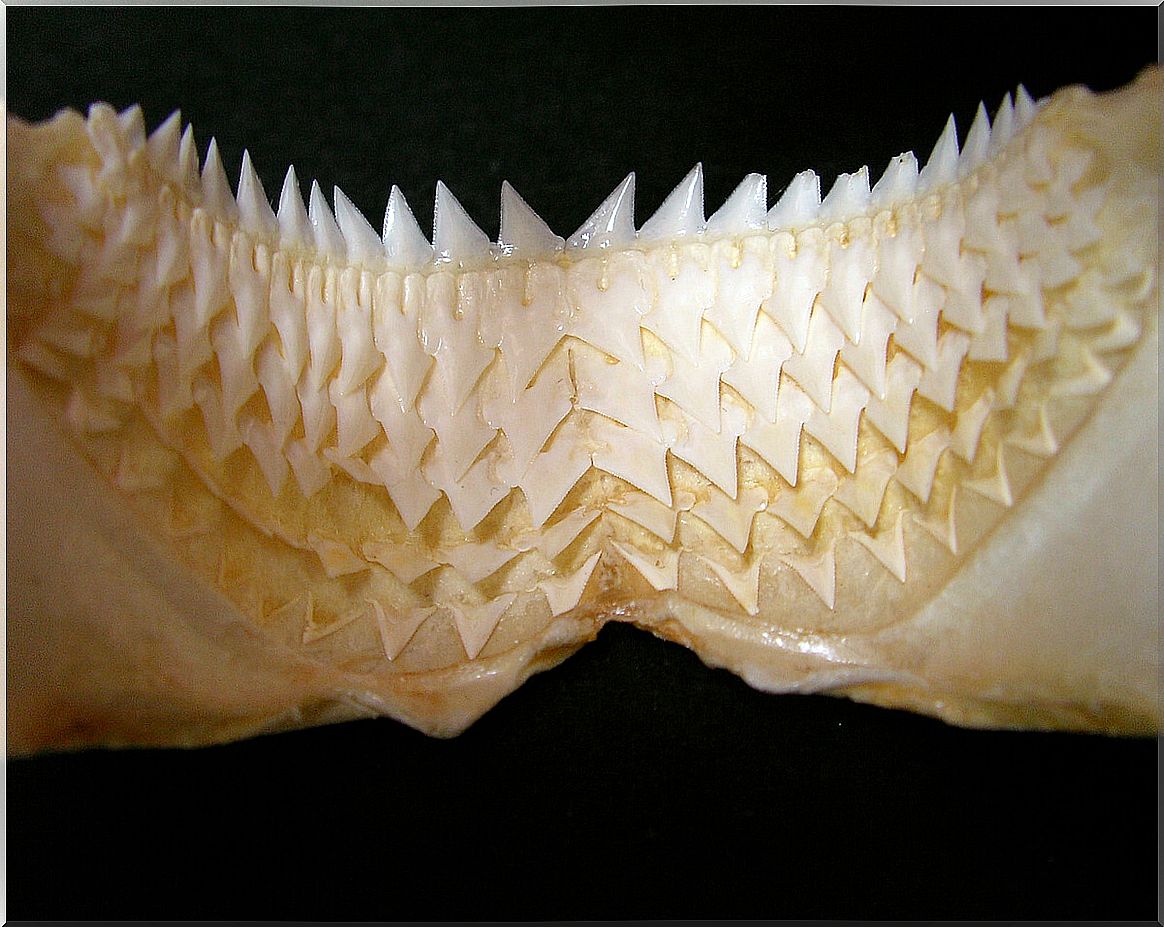World’s Largest Bright Shark Found

A new scientific study published in Frontiers in Marine Science has described how 3 shark species are able to emit their own light. One of them, the carocho or Dalatias licha , is the largest bright shark in the world.
At 1.80 meters in length, this animal is not only the largest shark, but the largest vertebrate with this ability, which is called bioluminescence. Along with the other 2 species – Etmopterus lucifer and Etmopterus granulosus – this shark can be encountered in the oceans surrounding New Zealand.
If you want to know more about this fascinating animal and how it produces light, as well as bioluminescence in general, we invite you to continue reading this article.
Bioluminescence in the animal kingdom
Bioluminescence is a very rare phenomenon in the terrestrial environment. Only a few invertebrates have this ability, the vast majority of their arthropods. The most famous are fireflies, a term that includes several species of insects that emit light through the abdomen.
On the contrary, this phenomenon is widespread in the marine environment. Although the vast majority of bioluminescent animals are invertebrates, an increasing number of bright aquatic vertebrates are also known.
Interestingly, the number of bioluminescent animals increases as you descend into the oceans. Most of these living things can be found in very deep water, where sunlight does not reach.
More than a bright shark
Sharks are normally considered to be huge super predators hiding beneath the ocean’s surface. However, this is only a small part of their biodiversity. These animals have existed for millions of years and have been able to adapt and colonize very different aquatic environments.
In fact, 2/3 of the sharks are less than one meter long and only 20% of the species exceeds one and a half meters. In addition, more than half of the sharks live more than 200 meters deep.
Most of them live between 200 and 1000 meters, in the crepuscular or mesopelagic zone. Some light still penetrates in this range, but it is so little that photosynthesis is prevented. For the human eye, the twilight zone is completely dark.
This is where bioluminescent sharks can be found. They belong to three different families – Dalatiidae, Etmopteridae and Somniosidae – which represent 57 of the 540 known shark species. Specimens of these families can be found in the deep waters of the entire planet.

The shagreen shark, the largest bright shark
The appearance of Dalatias licha, called the shagreen shark, is very different from that of the typical elasmobranch, as in the case of other species of bright shark. Its body is long and thin and its fins and tail are small and blunt. In addition, the head is small, with a short, rounded muzzle and large eyes adapted to darkness.
The teeth are different in the upper and lower jaw. The upper ones are small, thin and pointed, while the lower ones are large and triangular.
This set of teeth is suitable for parasitically tearing pieces of meat from larger animals – such as the cigar shark – as well as for preying on other sharks, fish, cephalopods and crustaceans.
The color is uniform and varies from dark brown to gray or black. Although the size of this fish cannot be compared to giants such as the white shark or the Greenland shark, its 1.80 meters dwarf the rest of the bright sharks, which usually do not reach 60 centimeters.
How does this animal make light?
The skin of the D. licha shark is covered with photophores, small organs with a surprisingly similar structure to that of an eye, since they have an iris, a lens, a pigmented layer and a cell that produces light: the photocity.
Thanks to these organs, the bright shark is able to produce a particularly intense blue-green light in the ventral part of the animal, where there is a greater concentration of photophores.
Therefore, it is believed that the bioluminescence of this animal serves to blend in. Seen from below, the illuminated shape of the shark would help it disappear, as it would make its shape the same brightness as the light coming from the surface. It could also be used to illuminate the seabed in search of prey.
To date, the mechanism these chondrichthyes use to generate light is unknown, as luciferin and luciferase, the responsible molecules, have not been found in other animals, nor in bacteria that could produce it.
Despite this, this new study has shown that the hormone melatonin is involved in the control of light. In humans, this hormone regulates sleep cycles and development.

Deep ocean creatures live in a very different environment from humans, so they are often overlooked. They are no less fascinating for this reason, as they still hide many mysteries for science.









